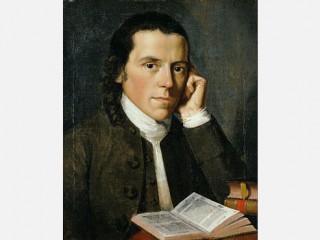
Benjamin Waterhouse biography
Date of birth : 1754-03-04
Date of death : 1846-10-02
Birthplace : Newport, Rhode Island
Nationality : American
Category : Science and Technology
Last modified : 2011-01-17
Credited as : Physician, cowpox vaccination,
The American physician Benjamin Waterhouse introduced cowpox vaccination against smallpox in the Boston area in 1800.
Benjamin Waterhouse was born at Newport, R.I., on March 4, 1754, the son of Timothy Waterhouse, a chairmaker. His mother was a cousin of Dr. John Fothergill, an eminent London physician. This family connection, plus the influence of the Scottish physicians practicing in Newport, led Waterhouse into medicine as an apprentice to Dr. John Haliburton. He spent most of 1777-1778 studying medicine in London and Edinburgh, then went to Leiden in late 1778.
Waterhouse returned to Newport in 1782 and joined the medical department of Harvard College the next year as professor of the theory and practice of physic. He married Elizabeth Oliver in 1788; she died in 1815, after giving birth to six children, and he remarried in 1819.
In 1799 Waterhouse learned of Edward Jenner's work in England, using cowpox as a vaccination against smallpox. Waterhouse immediately published a paper on this procedure, pointing out the advantage of cowpox as a very mild disease. Securing some cowpox matter in 1800, he inoculated his five-year-old son and a servant boy. He then exposed the servant boy to smallpox, resulting in a very mild infection, limited to the arm. While continuing to vaccinate with cowpox matter, Waterhouse began publicizing the method, notably in A Prospect of Exterminating the Small Pox (1800). Unfortunately, the need for pure cowpox material for inoculation and the need for medical supervision of inoculation procedures were not realized, and soon inoculation was being administered by the general populace, resulting in an epidemic. Criticism directed against Waterhouse was allayed when he demanded a complete investigation
by the Boston board of health in 1802, which verified all his claims for cowpox vaccination. From 1802 he continued to publicize and encourage vaccination in Massachusetts and neighboring states, constantly stressing the need for purity of vaccine.
In 1804 Waterhouse began an attack on the Harvard students for their use of tobacco and liquor, which he was convinced was responsible for the rise in incidence of consumption and nervous disorders. By 1810 Waterhouse was involved in a dispute with college officials and a number of younger medical men over the future direction of the medical school. He was committed to the lecture system exclusively and opposed the development of clinical facilities at a new site near the proposed Massachusetts General Hospital. After trying to establish a rival medical school, called the College of Physicians, Waterhouse was forced to resign from Harvard in 1812.
Waterhouse was medical superintendent of military posts in New England (1813-1820), which gave him time for a literary career. His best-known work is A Journal of a Young Man of Massachusetts, the story of a ship's doctor imprisoned by the British in the War of 1812. He died at his home in Cambridge on Oct. 2, 1846.
Some mention of Waterhouse's life and work is in Thomas F. Harrington, The Harvard Medical School: A History, Narrative and Documentary, 1782-1905 (1905), and Henry R. Viets, A Brief History of Medicine in Massachusetts (1930). Brooke Hindle, The Pursuit of Science in Revolutionary
America, 1735-1789 (1956), is the best source for general background.
The Life and scientific and medical career of Benjamin Waterhouse: with some account of the introduction of vaccination in America, New York: Arno Press, 1980.
















